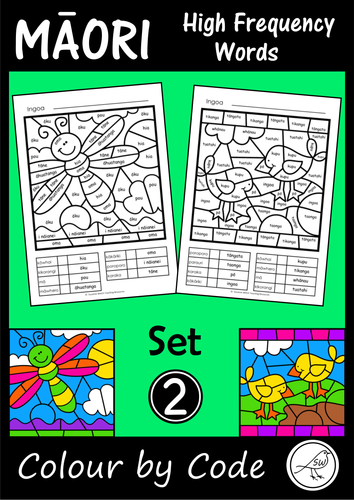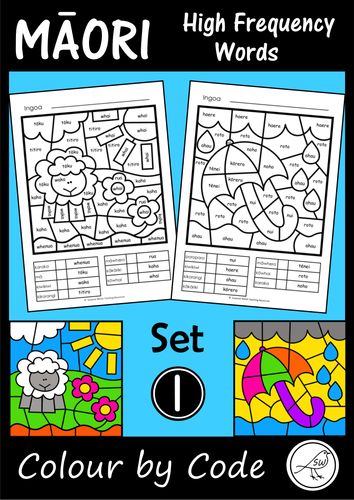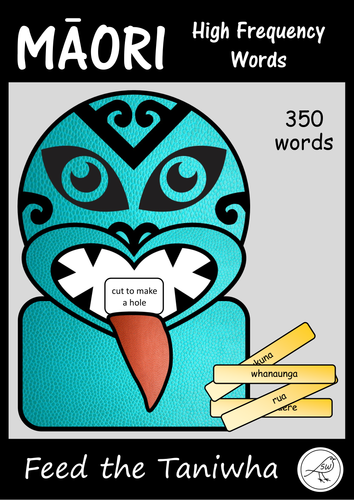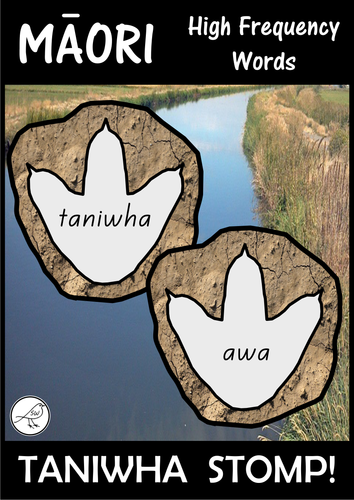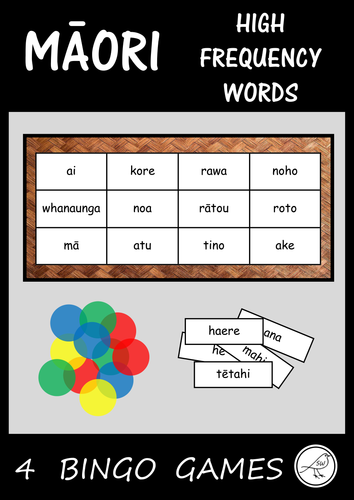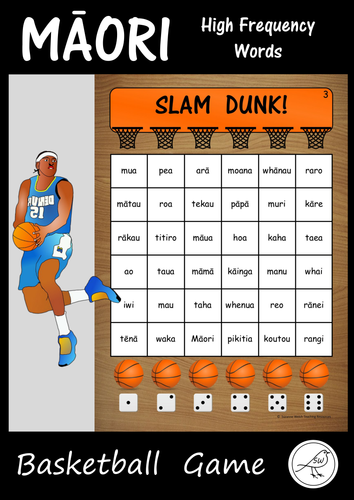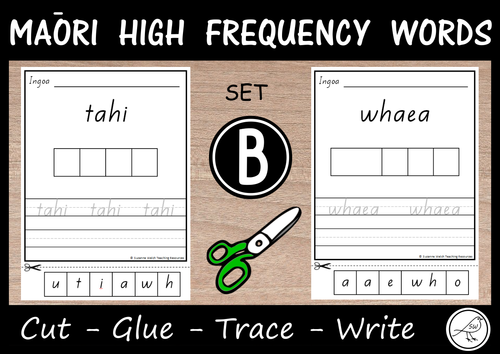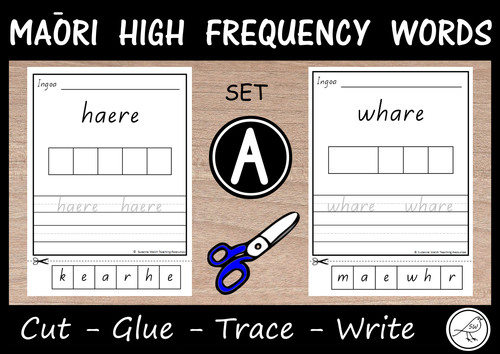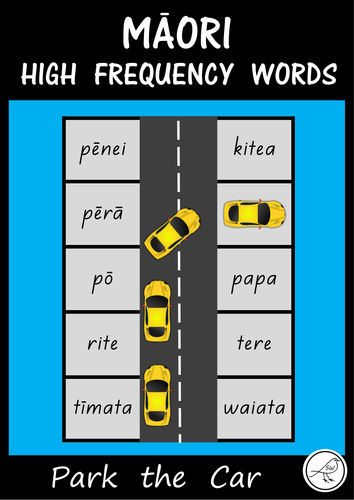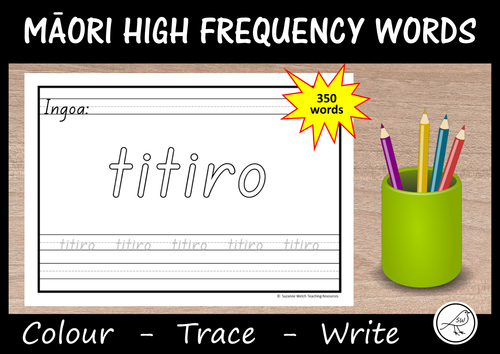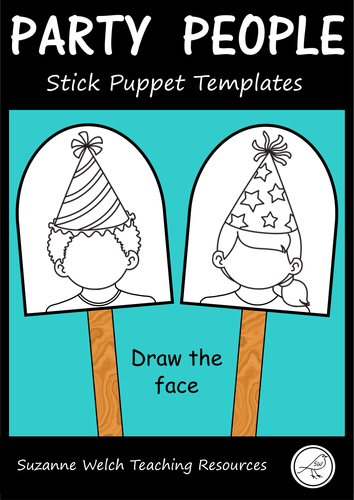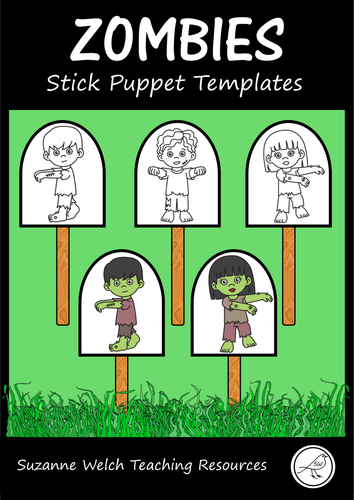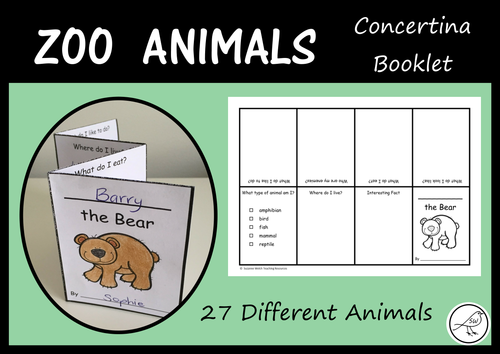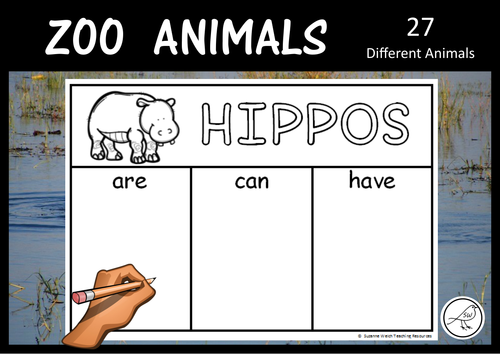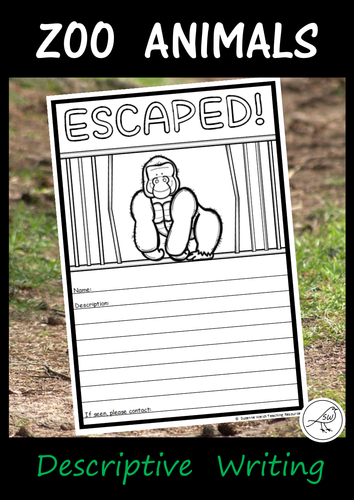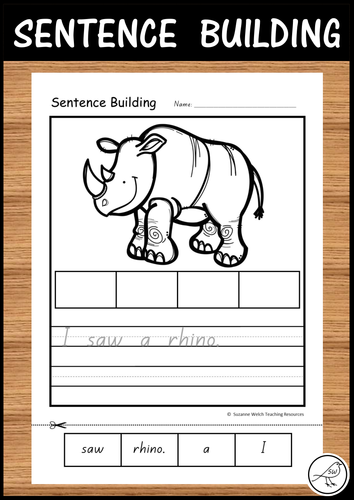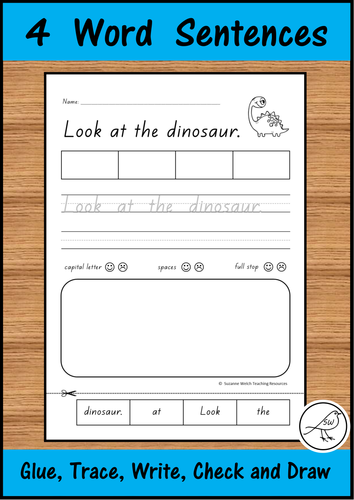
377Uploads
165k+Views
10k+Downloads
Literacy for early childhood

Māori High Frequency Words - Colour by Code – Set 2
A set of 10 activity sheets for students working on reading high frequency sight words in Te Reo Māori.
Colour the words according to the code to reveal a mystery picture.
The words used in this resource are sourced from a list on TKI called ‘1000 frequent words of Māori – in frequency order’. This set contains a selection of words from those listed in the 101-200 group.
Set 2a – 5x activity sheets (a selection of words from 101-150)
Set 2b – 5 x activity sheets (a selection of words from 151-200)
Included:
♦ 10 activity sheets
♦ 10 answer sheets
♦ Colour chart to help your students read the colour words
Each worksheet has a space for your students to write their name.
A ‘colour swatch’ box is included next to the colour word to help your students work on this activity with independence.
Words Used – Set 2a:
♦ CHICKS - tāngata, taonga, pō, ingoa, kupu, tikanga, whānau, tuatahi
♦ BIRD - kāre, arā, pā, raro, waiata, pea, pēnei, mua
♦ MONKEY - tīmata, tika, rere, ahakoa, pātai, mere
♦ OCTOPUS - mehemea, kotahi, moana, matua, toa, hanga, hiahia
♦ BARN - tama, tākaro, rite, tere, momo, ora, rongo
Words Used – Set 2b:
♦ BEACH - ika, rōpū, toru, tangi, anake, tinana, pakeke
♦ DUCK - marama, wāhanga, karanga, tuna, whakataetae, pukapuka, take, konei
♦ BREAKFAST - ringa, āe, ehara, awa, ērā, āwhina, pēhea
♦ BEAR - waho, rau, iti, Ngāti, maha, kuia, tahi, pango
♦ BUG - hia, ōku, pou, āhuatanga, oma, i nāianei, tāne
Please note that these pictures are also used in my NZ Sight Word resources (English).
This resource has been created to support Māori medium education in Aotearoa. A helpful resource for full immersion and bilingual classes.
**********************************************************************
© Suzanne Welch Teaching Resources

Māori High Frequency Words - Colour by Code – Set 1
A set of 10 activity sheets for students working on reading high frequency sight words in Te Reo Māori.
Colour the words according to the code to reveal a mystery picture.
The words used in this resource are sourced from a list on TKI called ‘1000 frequent words of Māori – in frequency order’. This set contains a selection of words from the first 100 words in this list.
Set 1a – 5x activity sheets (a selection of words from 1-50)
Set 1b – 5 x activity sheets (a selection of words from 51-100)
Included:
♦ 10 activity sheets
♦ 10 answer sheets
♦ Colour chart to help your students read the colour words
Each worksheet has a space for your students to write their name.
A ‘colour swatch’ box is included next to the colour word to help your students work on this activity with independence.
Words Used – Set 1a:
♦ CAR - rawa, atu, tino, ana, rā, ngā, ka, anō
♦ ELEPHANT - kei, mahi, nā, te, he, mā
♦ SUN - ki, rātou, nei, tonu, ko
♦ UMBRELLA - nui, haere, ahau, kōrero, tēnei, roto, noho
♦ PIG - kātahi, tētahi, ia, kore, noa, ai
Words Used – Set 1b:
♦ FLOWERS - reo, koutou, kura, tekau, tātou, rangi, pāpā, kāinga
♦ TRAIN - tēnā, pikitia, manu, iwi, tae, māori, ōna, tū, hoa
♦ SHEEP - whenua, tōku, waka, titiro, rua, kaha, whai
♦ FISH - āhua, rākau, ēnei, kite, whare, reira, iho
♦ TRACTOR - māmā, kāore, mōhio, taea, wāhi, tamariki, tangata, mātau
Please note that these pictures are also used in my NZ Sight Word resources (English).
This resource has been created to support Māori medium education in Aotearoa. A helpful resource for full immersion and bilingual classes.
**********************************************************************
© Suzanne Welch Teaching Resources

Māori High Frequency Words – Feed the Taniwha
A super-fun, hands-on activity for students learning to read the first 350 high frequency Māori words.
Read the word on the kūmara chip and feed it through the hole in the mouth of the taniwha.
Included:
♦ 350 kūmara chips - coloured
♦ 350 kūmara chips – black/white
♦ Chip templates (add extra words if necessary) – coloured & black/white.
♦ Taniwha – black/white for your students to decorate and personalise.
♦ Taniwha – 4 different coloured options
♦ Teacher notes
Please click on the ‘Look inside’ button above to see examples.
Activity Suggestions:
♦ Place the kūmara chips into a container. Students draw one out and read the word aloud. If they read it correctly, they feed it through the mouth of the taniwha. If not, they put the chip back into the container.
♦ Place the kūmara chips on the table/floor. The teacher says ‘find the word _____ and feed it to your taniwha’. This could be a race between a small group of students, or they could each have a word to find and feed.
Preparation:
♦ Laminate the taniwha. Cut a hole in the mouth where indicated (to feed the chips through). It is suggested that you attach the laminated taniwha to a 2-litre ice-cream container so that it stands up. This will also give the chips something to fall into.
♦ Print the chips with the words that you would like to use. Laminate and cut. Place into a container (or something like a chip carton from a fast food outlet).
Designed on A4 size paper.
14 kūmara chips on each page.
**********************************************************************
© Suzanne Welch Teaching Resources

Māori High Frequency Words – Taniwha Stomp
A fun resource for learning to read the first 350 high frequency Māori words.
Included:
♦ 350 coloured footprints with mud background
♦ 350 black/white footprints
♦ Blank templates (coloured and black/white)
♦ Teacher notes
Ideas for use:
♦ Place a track of footprints around the classroom. Students walk around the track, stomping on the footprints and reading the words (in a taniwha voice) as they go.
♦ Scatter the footprints on the floor. The teacher says a word. Which student can be the first to stomp on the correct word? (Be careful of little toes!)
♦ Print 2 sets and play ‘memory’. Place the cards face down. Students take turns at turning 2 cards over. If the words are the same, they keep the cards and have another turn. Who has the most pairs of cards at the end?
♦ Display the words around the classroom and go on a ‘taniwha hunt’. Who can find the word ‘haere’? Give your students a magnifying glass if you have some.
♦ Give the students a copy of the blank template (black and white). They can write a sight word in the footprint and decorate it. Perhaps you could staple a few together and make a little booklet.
♦ Create a ‘sentence stomp’. Make a sentence with the words and stomp it!
4 footprints per A4 size page. Enlarge to A3 if you want larger footprints.
Blank templates are provided for you to add words if necessary.
The font used is ‘NZ Basic Script’. The letter shapes are the same as those recommended in the NZ Ministry of Education Handbook – ‘Teaching Handwriting’.
**********************************************************************
© Suzanne Welch Teaching Resources

Māori High Frequency Words - BINGO
This resource contains 4 different BINGO games that are made with the first 200 high frequency Māori words. Each game contains 50 words.
The Games:
♦ Game 1 - words 1-50
♦ Game 2 - words 51-100
♦ Game 3 - words 101-150
♦ Game 4 - words 151-200
Each Game Includes:
♦ word cards (print and cut)
♦ 15 x coloured BINGO mats
♦ 15 x black/white BINGO mats
The coloured mats have a woven texture border. . The borders are the same as those used on my WORD CARDS. A black/white set of BINGO mats are also provided. If desired, your students could decorate the borders on these mats to personalise them.
♦ 3 BINGO mats on each A4 size page
♦ 12 words on each BINGO mat
This resource has been created to support Māori medium education in Aotearoa. A helpful resource for full immersion and bilingual classes.
Examples of words used: haere, tētahi, korero, ki, rawa, au, reira, reo, taea, whare, whakaaro, tekau, moana, tāngata, rongo, ingoa, hiahia, kitea, karanga, tuna, tangi, ehara, huarahi, pou.
For a full list of the words used in this resource please go to the tki website listed above. They are the first 200 words in frequency order (te to āhuatanga)
**********************************************************************
© Suzanne Welch Teaching Resources

Māori High Frequency Words – Basketball Game
‘Slam Dunk’ is a super-fun basketball themed game that will help your students practise reading high frequency Māori words.
There are 10 different game boards that contain the first 360 words of a list on TKI called ‘1000 frequency words of Māori – in frequency order’.
Included:
♦ 10 x coloured game boards
♦ 10 x black/white game boards
♦ Instructions
The words are written in frequency order and the games are numbered 1-10 in the top right corner.
How to Play:
Equipment Needed: one dice, 6 counters and one game board per player.
Players take alternate turns.
1. Place one counter on each of the 6 basketballs.
2. Roll the dice.
3. Find that number underneath the basketball and move that counter to the first word. Read the word out loud before placing your counter on top of it. The other player(s) checks you have read it correctly.
4. Continue in this way, moving a counter up one more space each time.
♦ Who is the first person to score a slam dunk? (when a counter reaches the basketball net at the top of the gameboard).
♦ Who is the first person to score all 6 slam dunks?
This resource has been created to support Māori medium education in Aotearoa. A helpful resource for full immersion and bilingual classes.
**********************************************************************
© Suzanne Welch Teaching Resources

Māori High Frequency Words – Cut, Glue, Trace, Write – Set B
Activity sheets for learners working on high frequency Māori words.
This resource contains 100 different words.
Tasks:
♦ write your name
♦ read the word
♦ cut the letter tiles out and throw away any you don’t need
♦ glue the letter tiles in the correct boxes
♦ trace the word
♦ write the word
The lines for writing on are standard junior size (14mm with a 7mm dashed line). The font used is ‘NZ Basic Script’. The letter shapes are the same as those recommended in the NZ Ministry of Education Handbook – ‘Teaching Handwriting’.
There are two A5 size worksheets on each A4 size page. The same word is used on each sheet for your printing convenience.
This resource has been created to support Māori medium education in Aotearoa. A helpful resource for full immersion and bilingual classes.
The words in this resource (Set B) are the second 100 words in the list on TKI that contain 1-6 letters.
Examples of words used:
moana, kupu, ahakoa, ora, rongo, waiata, hiahia, awa, heke, rōpū, marama, konei, tinana, tāne, pou, pēnei.
Set A is also available (the first 100 words). Available in my store.
**********************************************************************
© Suzanne Welch Teaching Resources

Māori High Frequency Words – Cut, Glue, Trace, Write – Set A
Activity sheets for learners working on high frequency Māori words.
This resource contains 100 different words.
Tasks:
♦ write your name
♦ read the word
♦ cut the letter tiles out and throw away any you don’t need
♦ glue the letter tiles in the correct boxes
♦ trace the word
♦ write the word
The lines for writing on are standard junior size (14mm with a 7mm dashed line). The font used is ‘NZ Basic Script’. The letter shapes are the same as those recommended in the NZ Ministry of Education Handbook – ‘Teaching Handwriting’.
There are two A5 size worksheets on each A4 size page. The same word is used on each sheet for your printing convenience.
This resource has been created to support Māori medium education in Aotearoa. A helpful resource for full immersion and bilingual classes.
The words in this resource (Set A) are the first 100 words in the list mentioned on TKI that contain 1-6 letters.
Examples of words used:
ki, ngā, mai, mahi, ahau, whare, kura, māori, haere, koutou, reo, whai, mua, anō, ia, kōrero.
Set B is also available (this has the next 100 words). Available in my store.
**********************************************************************
© Suzanne Welch Teaching Resources

Māori High Frequency Words – Park the car
A set of ‘Park the car’ activity sheets for 350 high frequency Māori words.
A great hands-on literacy activity that will engage many of your students (particularly your boys). Drive a toy car and park it on the correct word.
There are 35 carparks (A4 sheets) that list the words in frequency order.
Included:
♦ Set 1 – white carparks
♦ Set 2 – grey carparks
♦ Blank templates included so you can custom design a car park for your students.
♦ Car pictures (these may be used as a temporary solution if you don’t have any toy cars)
♦ Teacher notes / suggestions for use.
Words are written with the NZ Basic Script font.
• More than one car park can be lined up to make it more challenging.
• The sheets are numbered from 1-35.
• You can send a ‘car park’ home with your students as an alternative way of reinforcing high frequency word learning at home.
• Reluctant readers may feel more encouraged to participate if they bring in a toy car from home to use. Perhaps link it to a writing activity as well.
• It doesn’t have to be a toy car … it could be a truck, motorbike, horse etc.
This resource has been created to support Māori medium education in Aotearoa. A helpful resource for full immersion and bilingual classes.
Examples of words used: ngā, tētahi, mahi, reira, waka, whenua, pikitia, rua, tuatahi, rongo, karanga, āwhina, waho, kau, hua, tamaiti, ngahere, ako, paku, māna, whakahaere.
For a full list of the words used in this resource please go to the tki website listed above. They are the first 350 words in frequency order (te to oho)
**********************************************************************
© Suzanne Welch Teaching Resources

Māori High Frequency Words – Flip the whitebait fritters
A fun hands-on activity that will help your learners to read a wide range of high frequency Māori words.
Print and laminate the whitebait fritters. Students use a kitchen spatula to flip the word over.
Ideas:
• Read the word out loud and flip it over with a kitchen spatula.
• Read the word out loud and use a kitchen spatula to place the fritter in/out of a frying pan. (Use a real frying pan or use the one included).
• Be the first person to flip the fritter over with your kitchen spatula when the teacher calls the word (small group activity).
• Have a selection of fritters and arrange them like a BINGO card. Flip the fritter over when the teacher calls a word that you have. The first person to have all of their fritters turned over is the winner.
• Use them as a wall display.
• Print out 2 sets and play a memory game (matching pairs) with them. Turn the fritters face down. Take turns at flipping 2 fritters over. If they match you keep the fritters, if not it’s the next person’s turn.
• Read the word on the fritter. Write it down and then flip it.
Included:
♦ 350 whitebait fritters
♦ Blank template (for additional words if necessary)
♦ Teacher notes
♦ Fry pan
6 whitebait fritters on each A4 size page.
The font used is ‘NZ Basic Script’. The letter/number shapes are the same as those recommended in the NZ Ministry of Education Handbook – ‘Teaching Handwriting’.
This resource has been created to support Māori medium education in Aotearoa. A helpful resource for full immersion and bilingual classes.
Examples of words used: ngā, tētahi, mahi, reira, waka, whenua, pikitia, rua, tuatahi, rongo, karanga, āwhina, waho, kau, hua, tamaiti, ngahere, ako, paku, māna, whakahaere.
For a full list of the words used in this resource please go to the tki website listed above. They are the first 350 words in frequency order (te to oho)
**********************************************************************
© Suzanne Welch Teaching Resources

Māori High Frequency Words – Colour, Trace and Write
350 worksheets for your students to practise reading, spelling and writing high frequency Māori words.
• write your name.
• colour the word.
• trace the word (light grey font).
• write the word independently.
The size of the writing lines are standard for juniors (14mm with a 7mm dashed line).
The font used is ‘NZ Basic Script’. The letter shapes are the same as those recommended in the NZ Ministry of Education Handbook – ‘Teaching Handwriting’.
A4 size paper.
This resource has been created to support Māori medium education in Aotearoa. A helpful resource for full immersion and bilingual classes.
Examples of words used: ngā, tētahi, mahi, reira, waka, whenua, pikitia, rua, tuatahi, rongo, karanga, āwhina, waho, kau, hua, tamaiti, ngahere, ako, paku, māna, whakahaere.
For a full list of the words used in this resource please go to the tki website listed above. They are the first 350 words in frequency order (te to oho)
**********************************************************************
© Suzanne Welch Teaching Resources

Māori High Frequency Words – Fishing Activity
A great hands-on activity to reinforce the reading of 350 Māori high frequency words.
Make a fishing pole using a stick, string and magnet. Attach a paper clip (or split pin) to the fish and voilá! It’s time to go fishing.
These fish could also be used as a classroom ‘word wall’ display or used for activities in a literacy centre.
6 fish per A4 page
3 fish swimming left / 3 fish swimming right
Blank fish are also provided so you can add extra words if necessary.
The 350 words have been divided into 7 groups of 50 words. Each group is a different colour (pink, red, yellow, blue, green, orange, turquoise).
The font used is ‘NZ Basic Script’. The letter shapes are the same as those recommended in the NZ Ministry of Education Handbook – ‘Teaching Handwriting’.
This resource has been created to support Māori medium education in Aotearoa. A helpful resource for full immersion and bilingual classes.
Examples of words used: ngā, tētahi, mahi, reira, waka, whenua, pikitia, rua, tuatahi, rongo, karanga, āwhina, waho, kau, hua, tamaiti, ngahere, ako, paku, māna, whakahaere.
For a full list of the words used in this resource please go to the tki website listed above. They are the first 350 words in frequency order (te to oho)
**********************************************************************
© Suzanne Welch Teaching Resources

Stick Puppet Templates – Party People
10 boy/girl templates to make stick puppets. (5 boys and 5 girls).
Students decide what sort of emotion they would like their person to have and draw the face accordingly (eg happy, excited, sad, surprised, angry …)
If desired, your students could draw a different emotion on two of the templates (same person) and then stick them back to back with the craft stick in between. Then they can simply turn the puppet around during their performances to show a different emotion.
Blank templates are also included for you to make additional characters/props.
2 sizes:
♦ Large – 4 per page
♦ Small – 9 per page
A super-fun activity to encourage oral language development.
Great for play based learning, drama activities, story retells, celebration days, etc
**********************************************************************
© Suzanne Welch Teaching Resources

Zombies - Stick Puppet Templates
10 zombie boys/girls to make stick puppets. (5 boys and 5 girls).
Provided in colour and black/white.
Also included is a blank template to make additional characters/props.
2 formats for your printing convenience:
♦ 10 small zombie templates on one page (one of each character).
♦ 4 large zombie templates on one page (four different characters).
A super-fun activity to encourage oral language development. Great for literacy centres, imaginative play, drama activities, story retells, etc. Perfect for Halloween fun.
**********************************************************************
© Suzanne Welch Teaching Resources

Zoo Animals – Basic Report
A fun concertina booklet to present information about 27 different zoo animals.
The Report Headings:
What do I look like?
What do I eat?
Who are my enemies?
What do I like to do?
Where do I live?
Interesting fact.
What type of animal am I? (amphibian, bird, fish, mammal, reptile – tick the correct box)
Cover page – give the animal a name; write your own name; colour the animal.
How To Construct:
1. Trim around the outside of the page.
2. Fold in half and glue.
3. Concertina fold to make a booklet.
Included:
♦ Template for 27 different zoo animals.
♦ Blank template (to make for other animals).
♦ Construction instructions.
The Animals:
Bear
Cheetah
Crocodile
Elephant
Flamingo
Frog
Giraffe
Gorilla
Hippopotamus
Kangaroo
Koala
Lion
Lizard
Monkey
Panda
Parrot
Peacock
Penguin
Polar Bear
Rhinoceros
Sloth
Snake
Tiger
Toucan
Tortoise
Walrus
Zebra
Designed on A4 size paper. Can be enlarged to allow additional room for writing.
**********************************************************************
© Suzanne Welch Teaching Resources

Zoo Animals – are… can… have…
Activity sheets for students to complete to show their knowledge of 27 different animals that are commonly found in zoos.
Suggestions for use:
* showing current knowledge before commencing an animal unit.
* recording knowledge during research.
Included:
• Activity sheet for 27 different animals.
• Blank template
• Alternative spelling for the plural of flamingo (flamingos / flamingoes)
The Animals:
Bear
Cheetah
Crocodile
Elephant
Flamingo
Frog
Giraffe
Gorilla
Hippo
Kangaroo
Koala
Lion
Lizard
Monkey
Panda
Parrot
Peacock
Penguin
Polar Bear
Rhino
Sloth
Snake
Tiger
Toucan
Tortoise
Walrus
Zebra
**********************************************************************
© Suzanne Welch Teaching Resources

Zoo Animals – Escaped Posters
A fantastic activity for descriptive writing.
Included:
♦ 27 x Templates with words (Name, Description, If seen please contact)
♦ 27 x Templates without words (9 lines to write on)
♦ 2 x Templates without pictures of animals (draw your own). With/without words.
The 27 Animals:
Bear
Cheetah
Crocodile
Elephant
Flamingo
Frog
Giraffe
Gorilla
Hippopotamus
Kangaroo
Koala
Lion
Lizard
Monkey
Panda
Parrot
Peacock
Penguin
Polar Bear
Rhinoceros
Sloth
Snake
Tiger
Toucan
Tortoise
Walrus
Zebra
**********************************************************************
© Suzanne Welch Teaching Resources

Label the Zoo Animals
A set of 26 zoo animals to label. Perfect for an animal study or as an activity pre/post a field trip to the zoo.
Options:
♦ Cut and glue the labels into the correct boxes.
♦ Use the word bank to write the words into the correct boxes.
The 26 Animals:
Bear
Crocodile
Cheetah
Elephant
Flamingo
Frog
Giraffe
Gorilla
Hippopotamus
Kangaroo
Koala
Lion
Lizard
Monkey
Panda
Parrot
Peacock
Penguin
Polar Bear
Rhinoceros
Sloth
Tiger
Toucan
Tortoise
Walrus
Zebra
There are 5 labels on each picture.
All pages are ‘landscape’ orientation and designed on A4 size paper.
**********************************************************************
© Suzanne Welch Teaching Resources

Sentence Building - Zoo Animals
Sentence building worksheets for the New Zealand junior classroom. 25 worksheets in four different formats so you can easily differentiate your student’s learning.
4 Different Formats:
♦ Cut and glue the words.
♦ Cut and glue the words + trace the sentence.
♦ Cut and glue the words + write the sentence.
♦ Cut and glue the words + trace and write the sentence.
Also included are 25 sentence cards that you can use as a teaching aid. These cards contain a coloured picture and the sentence.
The font used is ‘NZ Basic Script’. The letter shapes are the same as those recommended in the NZ Ministry of Education Handbook – ‘Teaching Handwriting’.
The theme is ZOO ANIMALS. The pictures are gorgeous and your students will love adding colour to them.
All of the sentences use high frequency sight words together with the name of the animal. Two of the sentences are questions.
The Sentences:
Look at the lion.
Look at my lizard.
I see a crocodile.
I see the sloth.
Here is a snake.
Here is my tortoise.
Here is the tiger.
I like the flamingo.
We like the cheetah.
He likes the gorilla.
Mum likes her parrot.
Dad saw the elephant.
I saw a rhino.
She saw a peacock.
We saw the bear.
They saw the kangaroo.
This is my toucan.
This is a zebra.
That is a penguin.
That is my monkey.
Where is the walrus?
Where is my frog?
The hippo is big.
The koala is little.
The giraffe is tall.
A fun, effective literacy resource that your students will love.
**********************************************************************
© Suzanne Welch Teaching Resources

Sentence Activity Sheets – 4 word sentences – glue, trace, write, check & draw.
Sentence worksheets for junior students. A total of 62 activity sheets that use basic sight words as the sentence starter.
Activities on each worksheet:
♦ WRITE your name.
♦ READ the sentence.
♦ CUT and GLUE the words in the correct order.
♦ TRACE the sentence.
♦ WRITE the sentence.
♦ CHECK that the sentence you have written has a capital letter, spaces between words and a full stop. Colour the happy / sad face accordingly.
♦ DRAW a picture to illustrate the sentence
The font used is ‘NZ Basic Script’. The letter shapes are the same as those recommended in the NZ Ministry of Education Handbook – ‘Teaching Handwriting’. The lines for writing on are 14mm with a 7mm dashed line.
31 Sentence Starters (early sight words):
Look at the …
Look at my …
Look in the …
Look for the …
Look on the …
I see a …
I see the …
I see my …
Here is a …
Here is my …
Here are my ...
Here is the …
I like the …
I like my …
I like to …
I like her …
I like his …
I saw a …
I saw the …
This is a …
This is my …
This is the …
He likes to …
She likes to …
That is my …
That is her …
That is his …
My mum is …
My mum likes …
My dad is …
My dad likes …
There are TWO WORKSHEETS for each sentence starter. A picture clue sits alongside the 4th word to help your students read it.
**********************************************************************
© Suzanne Welch Teaching Resources

